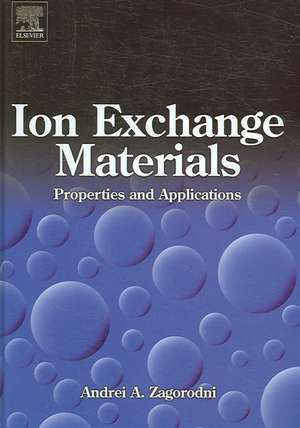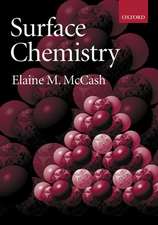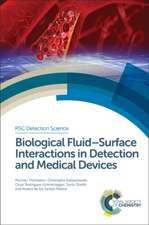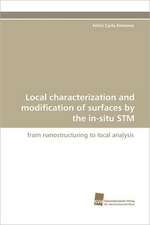Ion Exchange Materials: Properties and Applications
Autor Andrei A. Zagorodnien Limba Engleză Hardback – noi 2006
The book bridges these gaps by describing classical and modern theoretical concepts, as well as practical approaches for using ion exchange materials. Ion exchange materials combine properties of homogeneous and heterogeneous materials. Besides being an interesting subject for investigation, they are essential in a wide variety of industrial technologies: in the chemical and biochemical industries, pharmacy, medicine, microelectronics, the nuclear industry, food production, waste treatment, and many other areas. Ion exchange is a powerful tool in chemical analysis and scientific research. The main focus in this book is on ion exchange polymers: ion exchange resins, chelating resins, imprinted (templated), and other functional polymers. It provides an in-depth study of ion exchange materials, suitable for postgraduate students and R&D industrial specialists in chemistry, chemical and biochemical technology.
- Comprehensively covers the subject
- Provides links between theoretical concepts, material properties, practical applications, and technical solutions
- Easy to understand - requires only ground knowledge of university-level chemistry and can be read without an in-depth knowledge of mathematics
- Supported with an interactive website
Preț: 1053.81 lei
Preț vechi: 1443.58 lei
-27% Nou
Puncte Express: 1581
Preț estimativ în valută:
201.65€ • 211.24$ • 167.12£
201.65€ • 211.24$ • 167.12£
Carte tipărită la comandă
Livrare economică 09-23 aprilie
Preluare comenzi: 021 569.72.76
Specificații
ISBN-13: 9780080445526
ISBN-10: 0080445527
Pagini: 496
Dimensiuni: 234 x 156 x 34 mm
Greutate: 0.86 kg
Editura: ELSEVIER SCIENCE
ISBN-10: 0080445527
Pagini: 496
Dimensiuni: 234 x 156 x 34 mm
Greutate: 0.86 kg
Editura: ELSEVIER SCIENCE
Public țintă
Postgraduate students, R&D industrial specialists in chemistry and chemical and biochemical technology, researchers and specialists working with different chemical and biochemical separations, chemical (non-synthetic) and biochemical university departments and libraries, companies working with decontamination of waste streams, pharmaceutical companies.Cuprins
Preface
Symbols Used in the Book
1. Introduction
2. Ion Exchangers, their Structure and Major Properties
3. Specific Interactions in Ion Exchange Systems
4. Interactions with Organic and Biochemical Substances
5. Redox Materials
6. Impregnated Resins
7. Interactions with Water and Aqueous Solutions
8. Physico-Chemical Description of Ion Exchange Processes
9. Modern Physico-Chemical Models
10. Kinetics of Ion Exchange
11. Column Processes
12. Ion Exchange Purification and Separation
13. Analytical Applications of Ion Exchangers
14. Technological Schemes of Ion Exchange
15. Dual-Temperature Separation
16. Treatment of Gases and Fumes
17. Electroseparation with Ion Exchange Materials
18. Subjects that do not Fit in Other Chapters
19. Non-Chemical Aspects of Ion Exchange Technology
Appendix I. Practical Laboratory Methods
Appendix II. Definitions
References
Index
Symbols Used in the Book
1. Introduction
2. Ion Exchangers, their Structure and Major Properties
3. Specific Interactions in Ion Exchange Systems
4. Interactions with Organic and Biochemical Substances
5. Redox Materials
6. Impregnated Resins
7. Interactions with Water and Aqueous Solutions
8. Physico-Chemical Description of Ion Exchange Processes
9. Modern Physico-Chemical Models
10. Kinetics of Ion Exchange
11. Column Processes
12. Ion Exchange Purification and Separation
13. Analytical Applications of Ion Exchangers
14. Technological Schemes of Ion Exchange
15. Dual-Temperature Separation
16. Treatment of Gases and Fumes
17. Electroseparation with Ion Exchange Materials
18. Subjects that do not Fit in Other Chapters
19. Non-Chemical Aspects of Ion Exchange Technology
Appendix I. Practical Laboratory Methods
Appendix II. Definitions
References
Index




















